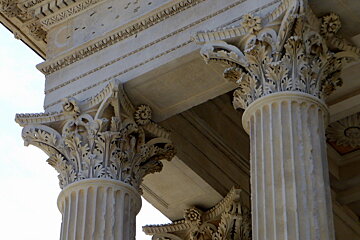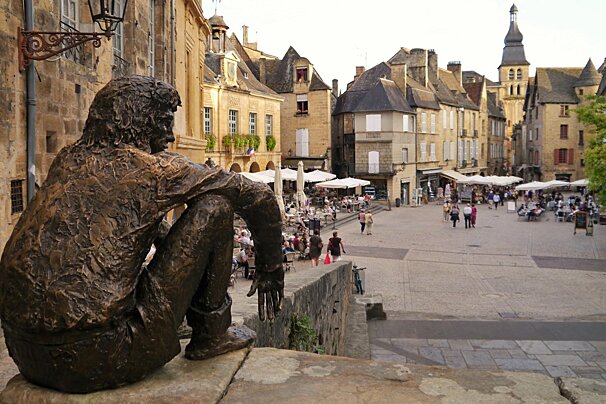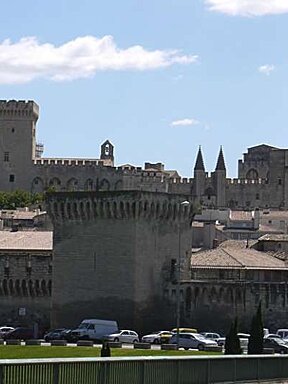
© SeeProvence.com
A Day Out in Nimes
Looking back at a wonderful day in the city of Nimes
We arrived on a Saturday afternoon in late October, when skies were overcast and visitors were few. Just as in many of the larger Provencal towns, we were led on a circular road around the centre, barred from entering the inner city by car, as it should be.
But that circular road does give you the first view of the Roman architecture in Nîmes: the impressive Arena, a Roman amphitheatre that used to seat 24,000 spectators. Today, the same arena (now seating 7000) is still used for spectator sports-confrontations, this time between bull and matador, with the highlights during the Ferias (fairs) season. The bullfights as well as the Ferias are world famous, with crowded streets and tickets hard to come by.
It's a bit quieter around the Maison Carrée (square house), one of the best-preserved Roman temples anywhere. It stems from the Emperor Augustus period. With its ornate Corinthian columns, scrolled frieze, rosettes and lions' heads, the temple stands there, magnificently.
Other important Roman reminders in Nîmes include the Porte d'Auguste, now basically a gate in ruins, in Roman times a security gate on the Domitian Way. Inside the courtyard is a copy of a statue of Augustus. The Castellum is where you find the ruins of the Roman distribution tank that collected water carried from the springs of the river Uzès, by way of the Pont du Gard. The Tour Magne sits on top of the hill overlooking the city stands this ancient massive tower.
What if Corinthian columns or ancient arches leave you lukewarm, should you ignore Nîmes? Is there more to this city than old stones and periodic bullfights? We say whole-heartedly yes!
That Saturday afternoon in October, we wandered, without map or guide, through the intricate pattern of narrow streets of the city centre and loved the pastel-coloured architecture of Provence, the narrow passageways and the surprises around each corner. We found this open space with a street musician and side walk cafés that were busily occupied. It showed that the city even outside the tourist season (and even under overcast skies) is alive and very attractive.
Just outside the old city centre lies our favourite part Nîmes: the Jardin de la Fontaine, a park designed and built in the 18th century. With the abundant waters of the springs higher up on the hill, the garden is one of stone balustrades, mirror pools, fountains, shaded pathways and more water. It is a vast park, that at the same time seems so intimate and endearing. The water flows and the white-washed stones may contribute to this feeling.
Still, you cannot escape the past, even in this park: in a corner you find the temple of Diane (possibly the remnants of a complex of baths, rather than a place of worship to the goddess of the hunt), which has clearly suffered from years of neglect and destruction. It is worth your while to explore and discover pieces of carvings or imagine what the place would have been used for in ancient times.
For the visitor who wants to leave the Roman rubble to itself, just outside the temple is a peaceful part of the park where you can find quiet and shade under the plane trees.






















